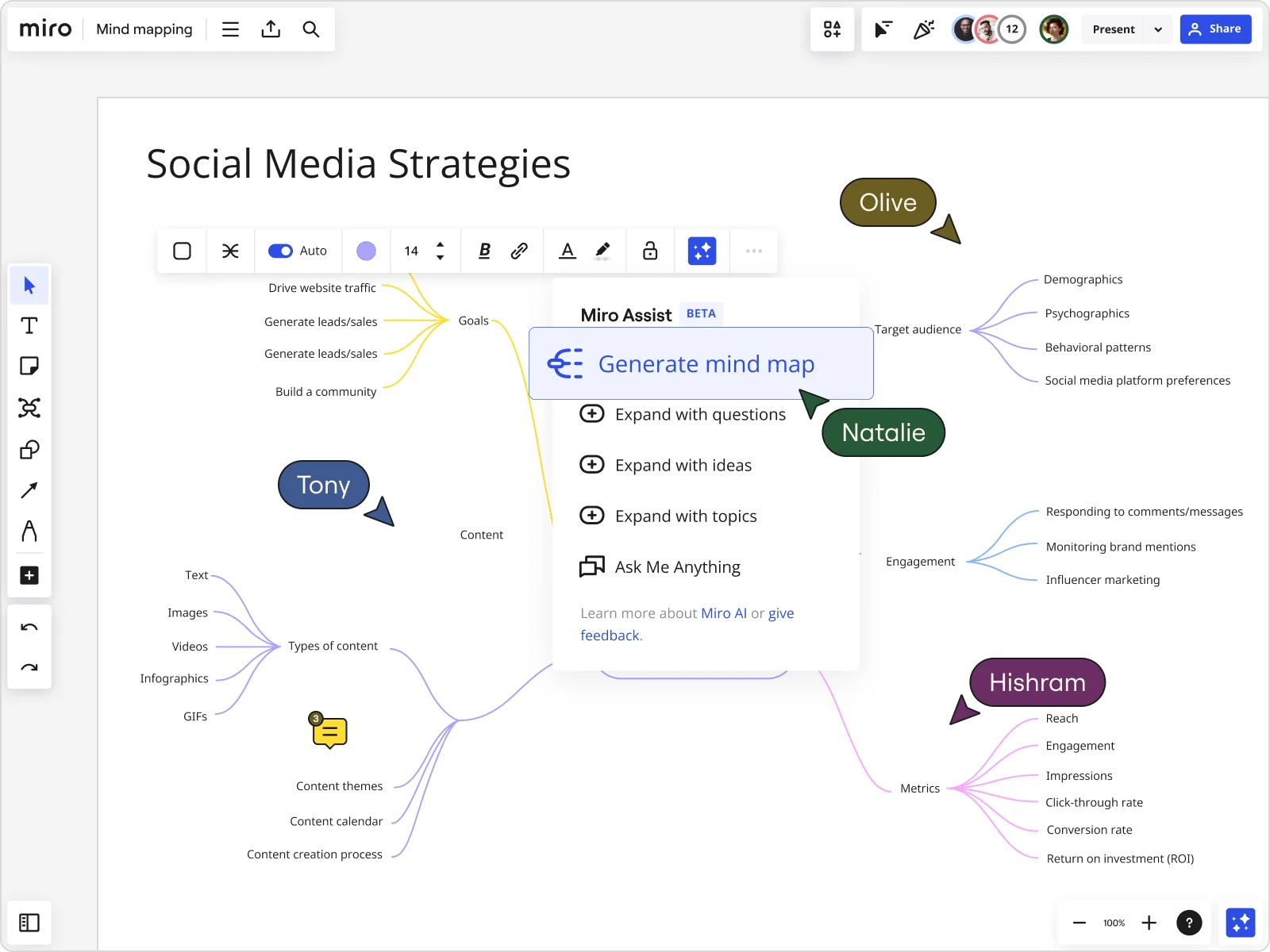Timeline Tales
Exploring the stories that shape our world, one timeline at a time.
Mind Mapping Madness: Tools That Transform Thoughts
Unlock your creativity! Discover powerful mind mapping tools that will revolutionize your thinking and boost productivity. Dive into Mind Mapping Madness!
Unlock Your Creativity: The Best Mind Mapping Tools Explained
Unlocking your creativity can often be as simple as organizing your thoughts effectively. One of the best methods to do this is through mind mapping, a powerful technique that allows you to visually structure information. Mind mapping tools offer a range of features to help you brainstorm, plan projects, and develop ideas in a more interactive way. Some popular tools include MindMeister, XMind, and Coggle. Each of these platforms provides unique functionalities that cater to different creative needs, such as collaborative features, customizable templates, and cloud storage options that make your maps accessible anywhere.
When choosing the best mind mapping tools for your brainstorming sessions, consider your specific goals and working style. For instance, if you prefer a minimalistic design, Miro might be the perfect fit, allowing you to create clear and straight-to-the-point maps. On the other hand, if you thrive in a collaborative environment, Mindomo is ideal, providing real-time collaboration features. To explore a more comprehensive list, you can visit Creative Bloq, which breaks down various tools along with their benefits and use cases.

Transforming Ideas to Action: How Mind Mapping Enhances Productivity
In today's fast-paced world, transforming ideas to action can often feel overwhelming. Mind mapping serves as a powerful tool to visualize and organize thoughts, enabling individuals to break down complex ideas into structured, actionable steps. By creating a visual representation of ideas, users can easily see the connections between them, prioritize tasks, and identify potential obstacles. This method not only enhances clarity but also stimulates creativity, encouraging the generation of new ideas and solutions.
Utilizing mind mapping techniques can significantly boost productivity. According to research from Psychology Today, engaging in this process can increase retention and recall of information by 10%. To maximize this benefit, consider the following steps when creating your mind map:
- Start with a central idea at the center of your map.
- Branch out with subtopics or related concepts.
- Add keywords or images to enhance memory retention.
- Review and adjust your map as needed.
By actively employing these strategies, individuals can effectively turn their ideas into tangible actions.
The Ultimate Guide to Mind Mapping: Techniques and Tools for Effective Thought Organization
Mind mapping is a powerful technique for organizing thoughts, ideas, and information visually. By creating a mind map, you can enhance creativity, improve memory retention, and increase productivity. To start, you'll want to place your central idea in the center of your map. From there, branch out into related topics and subtopics, using lines to connect ideas. It's essential to use colors, images, and keywords to make your map engaging and memorable. As you work through the process, you may also consider using digital tools, such as MindMeister or Xmind, which provide templates and features that enhance the mind-mapping experience.
Incorporating effective techniques can further improve your mind mapping skills. For instance, using the hierarchical structure allows you to prioritize information by distinguishing between main ideas and supporting details. Another technique is to employ images and symbols to trigger your memory and foster connections between ideas. Additionally, consider the benefits of mind mapping in the workplace, which include improved collaboration and efficiency. To maximize the effectiveness of your mind maps, don't hesitate to explore various software options and experiment with different styles until you find the one that best suits your personal workflow.